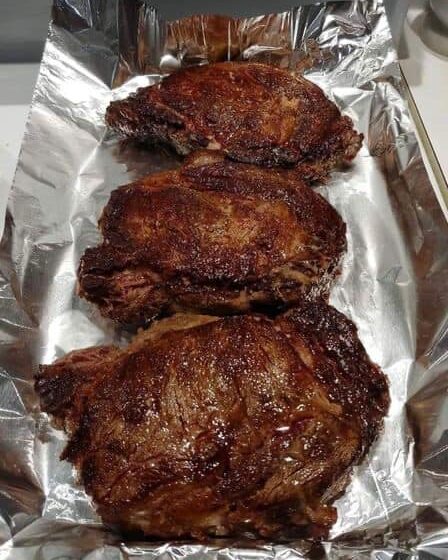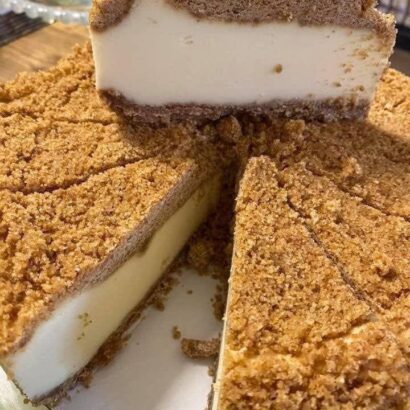Description
A well-seared ribeye steak is a classic, indulgent meal. With just a few ingredients—salt, pepper, butter, and herbs—you can transform a ribeye into a tender, flavorful dish that’s perfect for special occasions or simply treating yourself. This guide shows you how to achieve that golden crust and juicy interior, all in a stovetop skillet.
Who is This Recipe For?
This recipe is perfect for steak lovers, from beginners to experienced cooks, looking to master the art of a perfectly pan-seared ribeye. If you’re after that rich, caramelized crust with a tender, flavorful center, this simple yet effective technique is for you.
Why It’s Great
Ribeye steak, with its marbling and flavor, cooks beautifully with just a bit of seasoning and a hot pan. The addition of butter, thyme, and garlic creates a rich, aromatic sauce that enhances the steak’s natural flavor. This method allows you to control the doneness of your steak precisely, so it turns out just how you like it every time.
Ingredients
- 1 ribeye steak (about 3 cm thick)
- Sea salt flakes, to taste
- Freshly ground black pepper, to taste
- 50g butter
- 2 sprigs of thyme
- 1 garlic clove, crushed with skin on
How to Make Ribeye Steak
- Bring to Room Temperature:
- Remove the ribeye steak from the refrigerator at least 30 minutes before cooking. Allowing it to reach room temperature helps ensure even cooking.
- Season the Steak:
- Generously season both sides of the steak with sea salt flakes and freshly ground black pepper.
- Heat the Pan:
- Place a large frying pan over medium-high heat. For multiple steaks, use a large pan or two separate pans to avoid overcrowding.
- Sear the Steak:
- Add the steak to the hot pan and cook for 2 to 3 minutes on each side, depending on the desired doneness and steak thickness. For reference:
- Rare: 50°C (120°F)
- Medium: 60°C (140°F)
- Well-done: 70°C (160°F)
- Use a meat thermometer for accuracy, if possible.
- Add the steak to the hot pan and cook for 2 to 3 minutes on each side, depending on the desired doneness and steak thickness. For reference:
- Baste with Butter and Herbs:
- After turning the steak, add butter, thyme, and garlic to the pan. Tilt the pan slightly so the butter collects on one side, and use a spoon to continuously baste the steak with the melted butter mixture for about 1 minute.
- Rest the Steak:
- Remove the steak from the skillet and let it rest on a plate for at least 5 minutes. This step allows the juices to redistribute, ensuring a juicy, flavorful steak when sliced.
- Slice and Serve:
- Cut the steak into strips, season with additional salt and pepper if desired, and serve with your choice of side dishes or sauces.
Kitchen Equipment Needed
- Large frying pan
- Meat thermometer (optional, but recommended)
- Tongs or a spatula
- Spoon
Storage
If you have leftovers, store them in an airtight container in the refrigerator for up to 3 days. Reheat gently in a skillet over low heat or enjoy cold in salads or sandwiches.
FAQ
What’s the best way to tell if my steak is done?
Using a meat thermometer is the most reliable way to gauge doneness. For rare, aim for 50°C (120°F); for medium, 60°C (140°F); and for well-done, 70°C (160°F).
Why let the steak rest after cooking?
Resting helps retain the steak’s juices. If you cut it immediately, the juices will run out, leaving the steak dry. Allowing a few minutes for resting helps keep it juicy and tender.
Can I add other herbs?
Absolutely! Rosemary and sage are great options to try along with thyme for added flavor.
Conclusion
This Ribeye Steak recipe is a foolproof way to enjoy a rich, delicious steak at home. The pan-searing method with a butter baste ensures a golden crust and juicy, tender interior. Serve with a side of mashed potatoes, roasted vegetables, or a fresh salad for a complete, satisfying meal that’s sure to impress.



